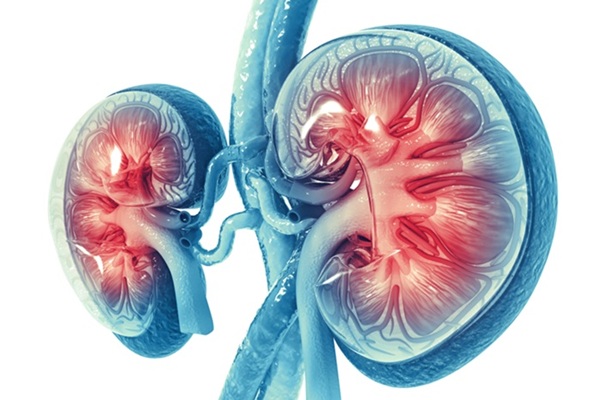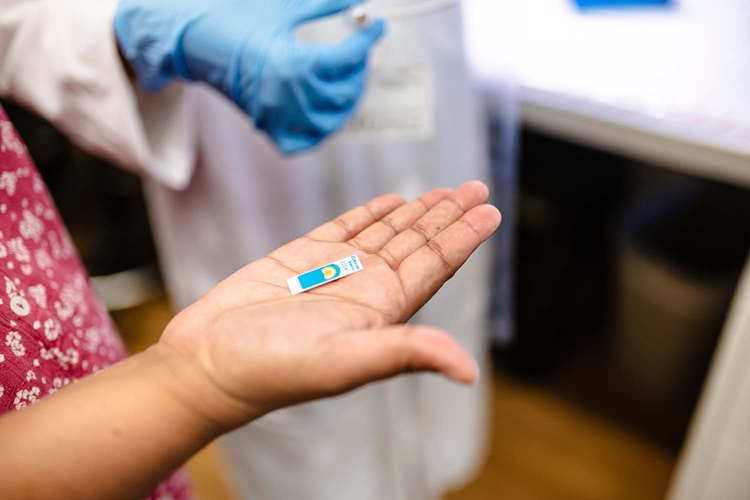Red Blood Cells Function as Critical Immune Sensors by Binding Cell-Free DNA
|
By LabMedica International staff writers Posted on 04 Nov 2021 |
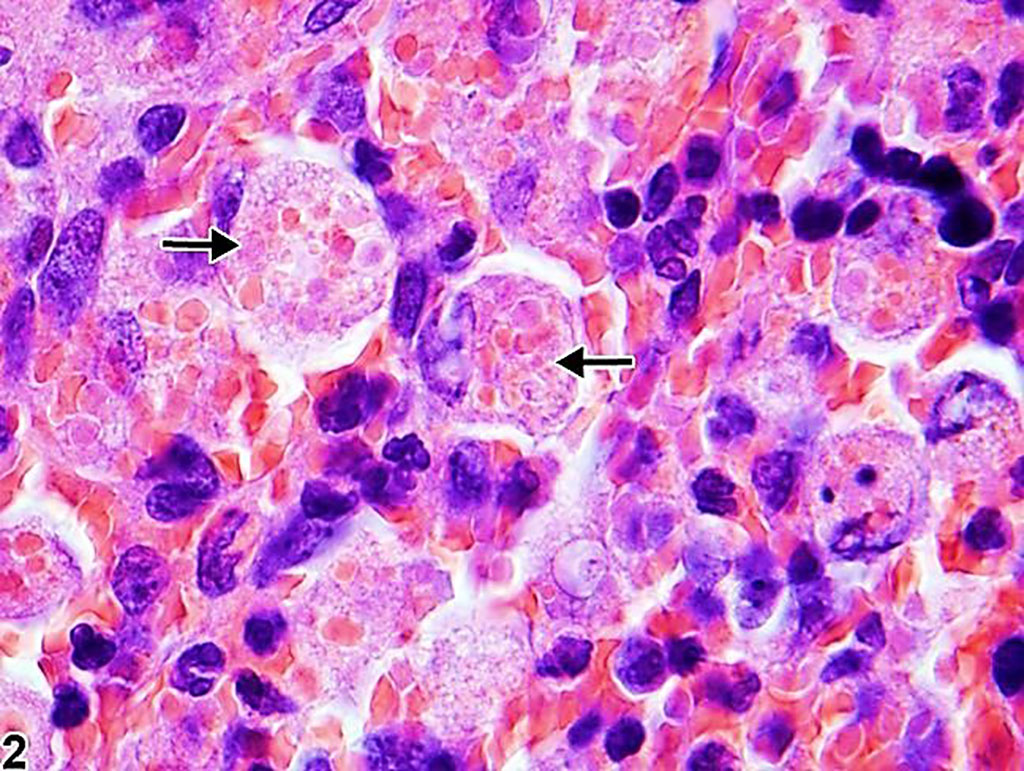
Image: Erythrophagocytosis by splenic macrophages (arrows): DNA binding to TLR9 expressed by red blood cells promotes innate immune activation and anemia (Photo courtesy of Tekportal)
Red blood cells (RBCs) are essential for aerobic respiration through delivery of oxygen to distant tissues. However, RBCs are currently considered immunologically inert, and few, if any, secondary functions of RBCs have been identified.
Although non–gas exchanging functions of the red cell such as chemokine regulation, complement binding, and pathogen immobilization have been described, RBC immune function remains enigmatic. RBCs transit through all tissues and contact pathogen and self-derived inflammatory mediators in the circulation, positioning them as ideal messengers between distant organs.
A large team of Clinical Scientists led by those at the University of Pennsylvania School of Medicine (Philadelphia, PA, USA) examined the red blood cells of about 50 sepsis patients and 100 COVID-19 patients and found that, during these illnesses, red blood cells express an increased amount of the specific Toll-like receptors (TLR) protein called TLR9 on their surface. TLRs are a class of proteins that play a key role in the immune system by activating immune responses like cytokine production. Hemoglobin parameters were collected from the electronic medical record complete blood count on days 0 and 7, selecting the lowest value from the day if more than one measurement was available per day.
The investigators showed that when the red blood cells bind too much inflammation-causing nucleic acid, they lose their normal structure, causing the body to not recognize them anymore. This leads to erythrophagocytosis by splenic macrophages, resulting in acute anemia. When this happens it causes the immune system to become activated in otherwise unaffected organs, creating inflammation. This mechanistic discovery opens the door to studies on how to block this specific receptor and create targeted therapies for autoimmune diseases, infectious diseases, and a whole host of inflammatory illnesses associated with acute anemia.
The detection and capture of nucleic acid by TLR9-expressing RBCs regulated red cell clearance and inflammatory cytokine production, demonstrating that RBCs function as immune sentinels during pathologic states. Consistent with these findings, RBC-bound mitochondrial DNA was elevated in individuals with viral pneumonia and sepsis secondary to coronavirus disease 2019 (COVID-19) and associated with anemia and severity of disease.
Nilam Mangalmurti, MD, an assistant professor and senior author of the study, said, “Anemia is common, affecting about a quarter of the world’s population. Acute inflammatory anemia is often seen early after an infection such as parasitic infections that cause malaria. For a long time we haven’t known why people, when they are critically ill from sepsis, trauma, COVID-19, a bacterial infection, or parasite infection, develop an acute anemia. These findings explain one of the mechanisms for the development of acute inflammatory anemia for the first time.”
The authors concluded that they had demonstrated that RBCs serve as DNA sensors through surface expression of TLR9, which appears to be beneficial during quiescent states, where it promotes scavenging of trace CpG to prevent nonspecific inflammation. However, during conditions characterized by excess circulating CpG, such as sepsis and COVID-19, binding of CpG by RBC-TLR9 leads to accelerated clearance and inflammation. The study was published on October 20, 2021 in the journal Science Translational Medicine.
Related Links:
University of Pennsylvania School of Medicine
Although non–gas exchanging functions of the red cell such as chemokine regulation, complement binding, and pathogen immobilization have been described, RBC immune function remains enigmatic. RBCs transit through all tissues and contact pathogen and self-derived inflammatory mediators in the circulation, positioning them as ideal messengers between distant organs.
A large team of Clinical Scientists led by those at the University of Pennsylvania School of Medicine (Philadelphia, PA, USA) examined the red blood cells of about 50 sepsis patients and 100 COVID-19 patients and found that, during these illnesses, red blood cells express an increased amount of the specific Toll-like receptors (TLR) protein called TLR9 on their surface. TLRs are a class of proteins that play a key role in the immune system by activating immune responses like cytokine production. Hemoglobin parameters were collected from the electronic medical record complete blood count on days 0 and 7, selecting the lowest value from the day if more than one measurement was available per day.
The investigators showed that when the red blood cells bind too much inflammation-causing nucleic acid, they lose their normal structure, causing the body to not recognize them anymore. This leads to erythrophagocytosis by splenic macrophages, resulting in acute anemia. When this happens it causes the immune system to become activated in otherwise unaffected organs, creating inflammation. This mechanistic discovery opens the door to studies on how to block this specific receptor and create targeted therapies for autoimmune diseases, infectious diseases, and a whole host of inflammatory illnesses associated with acute anemia.
The detection and capture of nucleic acid by TLR9-expressing RBCs regulated red cell clearance and inflammatory cytokine production, demonstrating that RBCs function as immune sentinels during pathologic states. Consistent with these findings, RBC-bound mitochondrial DNA was elevated in individuals with viral pneumonia and sepsis secondary to coronavirus disease 2019 (COVID-19) and associated with anemia and severity of disease.
Nilam Mangalmurti, MD, an assistant professor and senior author of the study, said, “Anemia is common, affecting about a quarter of the world’s population. Acute inflammatory anemia is often seen early after an infection such as parasitic infections that cause malaria. For a long time we haven’t known why people, when they are critically ill from sepsis, trauma, COVID-19, a bacterial infection, or parasite infection, develop an acute anemia. These findings explain one of the mechanisms for the development of acute inflammatory anemia for the first time.”
The authors concluded that they had demonstrated that RBCs serve as DNA sensors through surface expression of TLR9, which appears to be beneficial during quiescent states, where it promotes scavenging of trace CpG to prevent nonspecific inflammation. However, during conditions characterized by excess circulating CpG, such as sepsis and COVID-19, binding of CpG by RBC-TLR9 leads to accelerated clearance and inflammation. The study was published on October 20, 2021 in the journal Science Translational Medicine.
Related Links:
University of Pennsylvania School of Medicine
Latest Hematology News
- Platelet Activity Blood Test in Middle Age Could Identify Early Alzheimer’s Risk
- Microvesicles Measurement Could Detect Vascular Injury in Sickle Cell Disease Patients
- ADLM’s New Coagulation Testing Guidance to Improve Care for Patients on Blood Thinners
- Viscoelastic Testing Could Improve Treatment of Maternal Hemorrhage
- Pioneering Model Measures Radiation Exposure in Blood for Precise Cancer Treatments
- Platelets Could Improve Early and Minimally Invasive Detection of Cancer
- Portable and Disposable Device Obtains Platelet-Rich Plasma Without Complex Equipment
- Disposable Cartridge-Based Test Delivers Rapid and Accurate CBC Results
- First Point-of-Care Heparin Monitoring Test Provides Results in Under 15 Minutes

- New Scoring System Predicts Risk of Developing Cancer from Common Blood Disorder
- Non-Invasive Prenatal Test for Fetal RhD Status Demonstrates 100% Accuracy
- WBC Count Could Predict Severity of COVID-19 Symptoms
- New Platelet Counting Technology to Help Labs Prevent Diagnosis Errors
- Streamlined Approach to Testing for Heparin-Induced Thrombocytopenia Improves Diagnostic Accuracy
- POC Hemostasis System Could Help Prevent Maternal Deaths
- New Test Assesses Oxygen Delivering Ability of Red Blood Cells by Measuring Their Shape
Channels
Clinical Chemistry
view channel
Chemical Imaging Probe Could Track and Treat Prostate Cancer
Prostate cancer remains a leading cause of illness and death among men, with many patients eventually developing resistance to standard hormone-blocking therapies. These drugs often lose effectiveness... Read more
Mismatch Between Two Common Kidney Function Tests Indicates Serious Health Problems
Creatinine has long been the standard for measuring kidney filtration, while cystatin C — a protein produced by all human cells — has been recommended as a complementary marker because it is influenced... Read moreMolecular Diagnostics
view channel
Simple Urine Test to Revolutionize Bladder Cancer Diagnosis and Treatment
Bladder cancer is one of the most common and deadly urological cancers and is marked by a high rate of recurrence. Diagnosis and follow-up still rely heavily on invasive cystoscopy or urine cytology, which... Read more
Blood Test to Enable Earlier and Simpler Detection of Liver Fibrosis
Persistent liver damage caused by alcohol misuse or viral infections can trigger liver fibrosis, a condition in which healthy tissue is gradually replaced by collagen fibers. Even after successful treatment... Read moreImmunology
view channel
New Test Distinguishes Vaccine-Induced False Positives from Active HIV Infection
Since HIV was identified in 1983, more than 91 million people have contracted the virus, and over 44 million have died from related causes. Today, nearly 40 million individuals worldwide live with HIV-1,... Read more
Gene Signature Test Predicts Response to Key Breast Cancer Treatment
DK4/6 inhibitors paired with hormone therapy have become a cornerstone treatment for advanced HR+/HER2– breast cancer, slowing tumor growth by blocking key proteins that drive cell division.... Read more
Chip Captures Cancer Cells from Blood to Help Select Right Breast Cancer Treatment
Ductal carcinoma in situ (DCIS) accounts for about a quarter of all breast cancer cases and generally carries a good prognosis. This non-invasive form of the disease may or may not become life-threatening.... Read moreMicrobiology
view channel
Rapid Diagnostic Test Matches Gold Standard for Sepsis Detection
Sepsis kills 11 million people worldwide every year and generates massive healthcare costs. In the USA and Europe alone, sepsis accounts for USD 100 billion in annual hospitalization expenses.... Read moreRapid POC Tuberculosis Test Provides Results Within 15 Minutes
Tuberculosis remains one of the world’s deadliest infectious diseases, and reducing new cases depends on identifying individuals with latent infection before it progresses. Current diagnostic tools often... Read more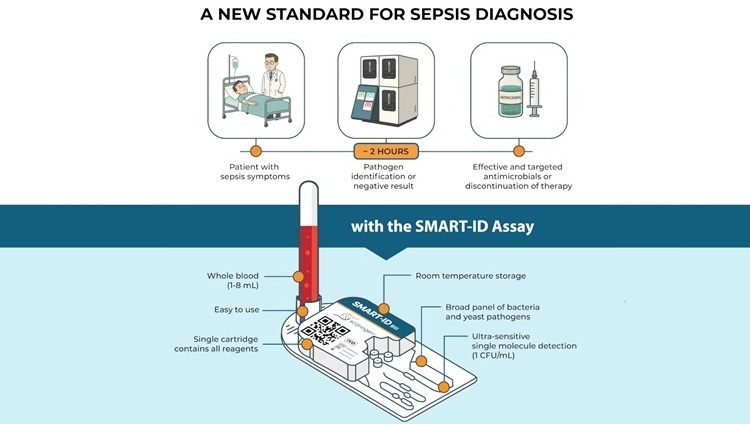
Rapid Assay Identifies Bloodstream Infection Pathogens Directly from Patient Samples
Bloodstream infections in sepsis progress quickly and demand rapid, precise diagnosis. Current blood-culture methods often take one to five days to identify the pathogen, leaving clinicians to treat blindly... Read morePathology
view channel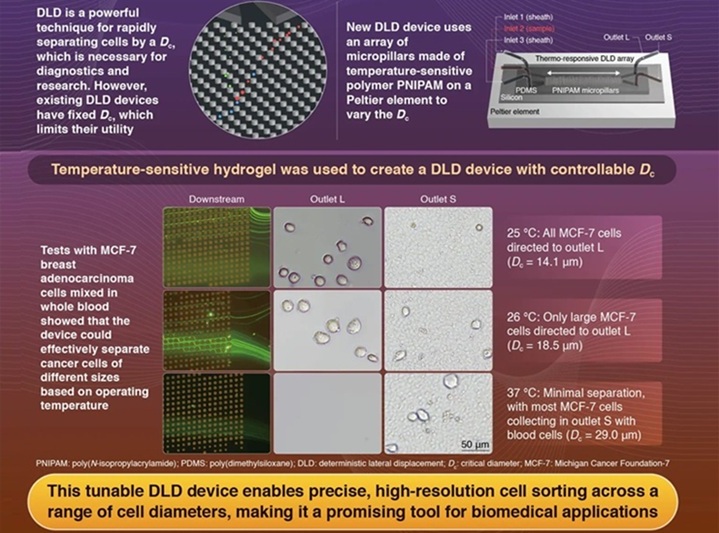
Tunable Cell-Sorting Device Holds Potential for Multiple Biomedical Applications
Isolating rare cancer cells from blood is essential for diagnosing metastasis and guiding treatment decisions, but remains technically challenging. Many existing techniques struggle to balance accuracy,... Read moreAI Tool Outperforms Doctors in Spotting Blood Cell Abnormalities
Diagnosing blood disorders depends on recognizing subtle abnormalities in cell size, shape, and structure, yet this process is slow, subjective, and requires years of expert training. Even specialists... Read moreTechnology
view channel
Artificial Intelligence Model Could Accelerate Rare Disease Diagnosis
Identifying which genetic variants actually cause disease remains one of the biggest challenges in genomic medicine. Each person carries tens of thousands of DNA changes, yet only a few meaningfully alter... Read more
AI Saliva Sensor Enables Early Detection of Head and Neck Cancer
Early detection of head and neck cancer remains difficult because the disease produces few or no symptoms in its earliest stages, and lesions often lie deep within the head or neck, where biopsy or endoscopy... Read moreIndustry
view channel
Abbott Acquires Cancer-Screening Company Exact Sciences
Abbott (Abbott Park, IL, USA) has entered into a definitive agreement to acquire Exact Sciences (Madison, WI, USA), enabling it to enter and lead in fast-growing cancer diagnostics segments.... Read more












